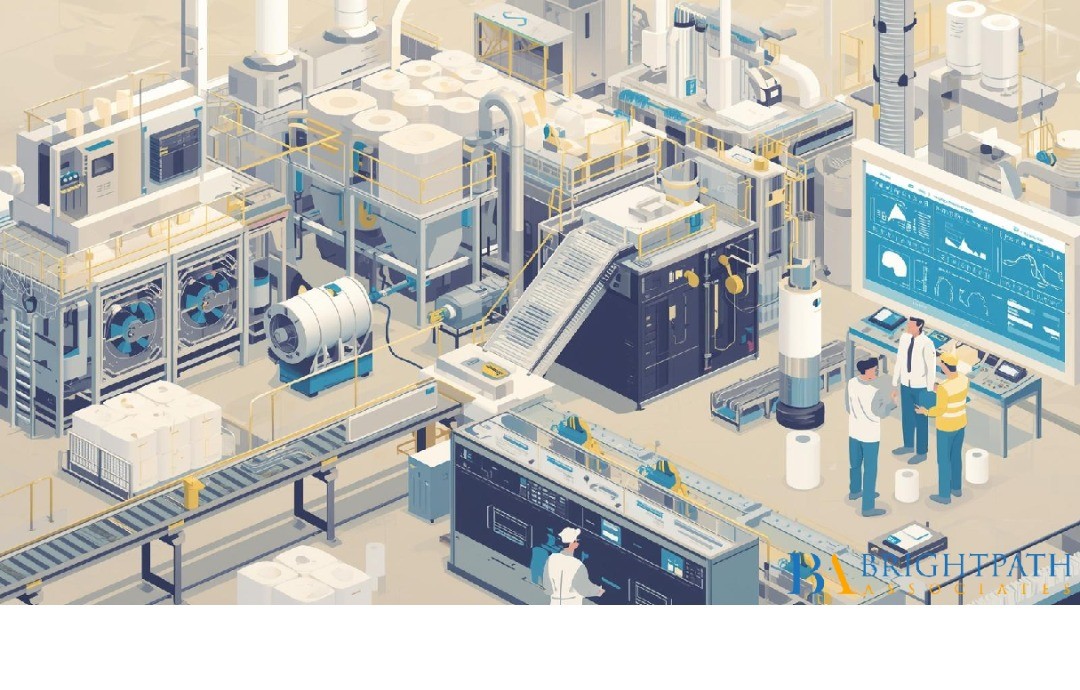Introduction
The pulp and #PaperIndustry stands at a transformative juncture with the rise of mill automation. As this essential sector seeks new efficiencies, automation technologies have begun playing a critical role in boosting productivity and sustainability. In light of these technological advancements, industry stakeholders are keen to explore how these systems drive current and future industry trends, making mill automation a focal point of discussion. The movement towards automation not only aligns with the industry’s urge to optimize processes, but it also reflects a broader commitment to innovation in response to evolving market demands and environmental responsibilities.
Current Trends in Pulp and Paper Mill Automation
Recent advancements in paper and pulp technology have drastically altered the landscape, ushering in a new era of automation-driven efficiency. These technologies, designed to streamline processes and reduce human error, are increasingly prevalent in mills worldwide. Statistics indicate a significant uptick in automation adoption, underscoring its growing importance in the sector. Reports suggest that mills implementing automated solutions see an average improvement in output by up to 30%, alongside reduced labor costs. Industry leaders recognize that automation is not merely a tool for achieving operational excellence, but a necessary component for competing effectively in today’s fast-paced market, where consumer expectations for quality and efficiency are at an all-time high.
The Role of Automation in Enhancing Efficiency
Advanced #AutomationSystems offer a myriad of benefits, chief among them improved operational efficiency and enhanced product quality. By deploying robotics, artificial intelligence, and automated control systems, mills are revolutionizing traditional timber harvesting and wood product manufacturing processes. Automated systems not only enhance productivity but also drastically minimize waste and improve resource allocation, contributing to more sustainable practices. Moreover, the integration of intelligent sensors and real-time data analytics enables mills to optimize production schedules and maintenance routines. This leads to a reduction in downtime and helps increase overall output significantly. The automation of quality control processes also ensures consistency, as machines can perform these tasks with precision that may exceed human capabilities, thus improving customer satisfaction and reducing the risk of product returns.
Forest Product Innovation and Sustainable Practices
The integration of sustainable materials sourcing into automated systems marks a significant shift towards eco-friendly practices in the pulp and paper industry. As mills adopt greener technologies, paper recycling solutions have emerged as a crucial component of sustainable forest product innovation. These solutions not only decrease reliance on virgin timber but also mitigate environmental impact, paving the way toward more responsible resource use. The automation of recycling processes ensures the efficient handling of recycled materials, which streamlines operations and increases the throughput of recovered products, fostering a circular economy within the industry. Such systems can adjust automatically in real-time to changes in material properties, ensuring optimal processing and minimizing waste. Additionally, investments in research to develop biodegradable alternatives and sustainable raw materials showcase a forward-thinking approach to sustainability, with automation serving as a key enabler in these innovations.
Challenges and Economic Aspects
Despite the myriad benefits, #MillAutomation also presents challenges, particularly concerning the economic implications and regulatory environment of the paper industry. The transition to automated systems requires substantial investment, presenting an economic barrier for some companies that may struggle to allocate funds necessary for such technological upgrades. However, the long-term gains in efficiency and cost savings, such as reduced labor costs and operational downtime, often justify these expenditures, providing a return on investment that can enhance competitiveness in the market. Furthermore, forestry regulations pose additional hurdles, as companies must navigate complex compliance landscapes to implement new technologies. Adapting to these regulations requires foresighted planning and investment in compliance infrastructure, further complicating the financial landscape for mills looking to modernize.
Leadership Gaps and Executive Search Recruitment
Another critical challenge is the leadership talent shortage within the industry. As automation reshapes role expectations and the skill sets required for successful management, there is a pressing need for leaders who can spearhead these transformative efforts. The strategic evolution of recruitment practices is vital to meet these demands and align effectively with the futuristic objectives of the industry. #ExecutiveSearchRecruitment emerges as a key solution, bridging the gap between industry needs and available talent. This approach not only identifies candidates with the necessary technical expertise but also looks for those who possess a vision for innovative strategies that can drive success in an increasingly automated environment. Moreover, cultivating a pipeline of talent through partnerships with educational institutions and ongoing training programs can help mitigate this workforce shortfall over time, ultimately supporting the evolution of industry leadership and fostering a culture of adaptability and innovation.
Future Perspectives and Conclusions
Looking ahead, the trajectory of mill automation within the paper industry promises continued innovation and progressive advancements. The integration of artificial intelligence and machine learning technologies holds the potential to further refine operational efficiency and enhance sustainability efforts within the sector. As the industry adapts to these advancements, embracing both automation and #StrategicRecruitmentPractices will be essential for maintaining competitiveness. Innovating in automation will not only streamline operations but also allow firms to respond dynamically to market changes and consumer preferences. For C-suite executives and industry founders, the focus must remain on leveraging these technological and strategic innovations to secure their positions in the evolving market landscape. Through proactive engagement with these industry trends, which are powered by both technology and enhanced leadership capabilities, the pulp and paper sector can anticipate a future defined by enhanced efficiency, sustainable practices, and robust leadership capable of steering the industry towards continued growth and success. As the industry embraces these trends, it can lay the groundwork for a resilient and sustainable future, characterized by continuous improvement and an unwavering commitment to excellence.
Find your next leadership role in Paper & Forest Industry today!
Stay informed with the latest insights on Paper & Forest Industry!

